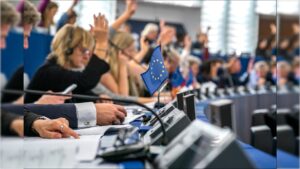The climate talks held in Bonn in June were aimed at preparing for this year’s COP30, which will take place in Brazil.
With the arrival of summer, climate policy activities usually quiet down every year, unlike climate change, which only then shows its true face: there were times when there were heavy floods caused by sudden rainfall, but in recent years and decades it has been widely evident in increasing heat waves. Last summer and this summer, extensive forest fires posed a challenge for Europeans, not all of which can be linked to climate change, but hot and dry weather conditions can contribute significantly to their spread.
These phenomena also highlight that the challenges posed by climate change are intensifying and that climate policy negotiations and other activities cannot be put on hold. This was the purpose of the UN climate negotiations held in Bonn at the end of June, which were the next meetings of the bodies overseeing the implementation of the Paris Agreement. These interim negotiations play a key role every year in helping countries around the world prepare, at a technical and political level, for the UN climate conference in November, which this time will be held in Belém, Brazil (COP30). The Bonn meeting was preceded by the first Global Stocktake in 2023 and the COP29 discussions in Azerbaijan in 2024. In Baku, the parties agreed to set a new collective climate finance target of hundreds of billions of dollars per year, the details of which are to be worked out by COP30. In addition, discussions on adaptation goals (Global Goal on Adaptation) in 2023–2024 and the launch of a financing mechanism for loss and damage (Loss and Damage) also set the main framework for the negotiations.
The meeting highlighted the duality of multilateral climate diplomacy: while progress was made in certain areas, deep divisions remained on the most critical issues.
One of the most significant achievements is the work plan on Just Transition. This decision brings the aspects of workers’ rights, community participation, and social equity closer to climate policy negotiations. Although only a preliminary text has been drafted, the political significance of this breakthrough is great: the social dimensions of climate goals have played a marginal role so far, but now they have been given their own negotiating framework.
Another step forward is that progress has been made in defining the metrics for the Global Goal on Adaptation. Developing countries have long complained that there is no clear system for measuring and monitoring climate adaptation. The introduction of new indicators could help make the distribution and effectiveness of adaptation support more transparent in the future, as climate adaptation needs to be given greater emphasis alongside emission reductions. At the same time, mitigation cannot be pushed into the background, yet issues surrounding the energy system transition and the phase-out of fossil fuels have remained largely untouched.
Once again, finance caused the greatest tension. Following the 2024 Baku decision, developing countries demanded the specific definition of a new financing target of hundreds of billions of dollars per year from public funds. In contrast, developed countries placed greater emphasis on attracting private capital. The initial deadlock on the agenda also showed that the issue of financing is causing a deep crisis of confidence. Although progress has been made on the so-called “Baku-Belém Roadmap,” without a real agreement before COP30, uncertainty remains.
The Bonn meeting proved that climate negotiations can simultaneously yield small but important technical results and stall on the most important political issues. Progress in the areas of just transition and adaptation indicators is a positive development, but financing and a lack of ambition cast a shadow over the progress made. This puts considerable pressure on COP30 in November: either a breakthrough will be achieved in the areas of finance and emissions reduction, or the gap between scientific realities and political decisions will continue to widen.
Photo: freepik.com






